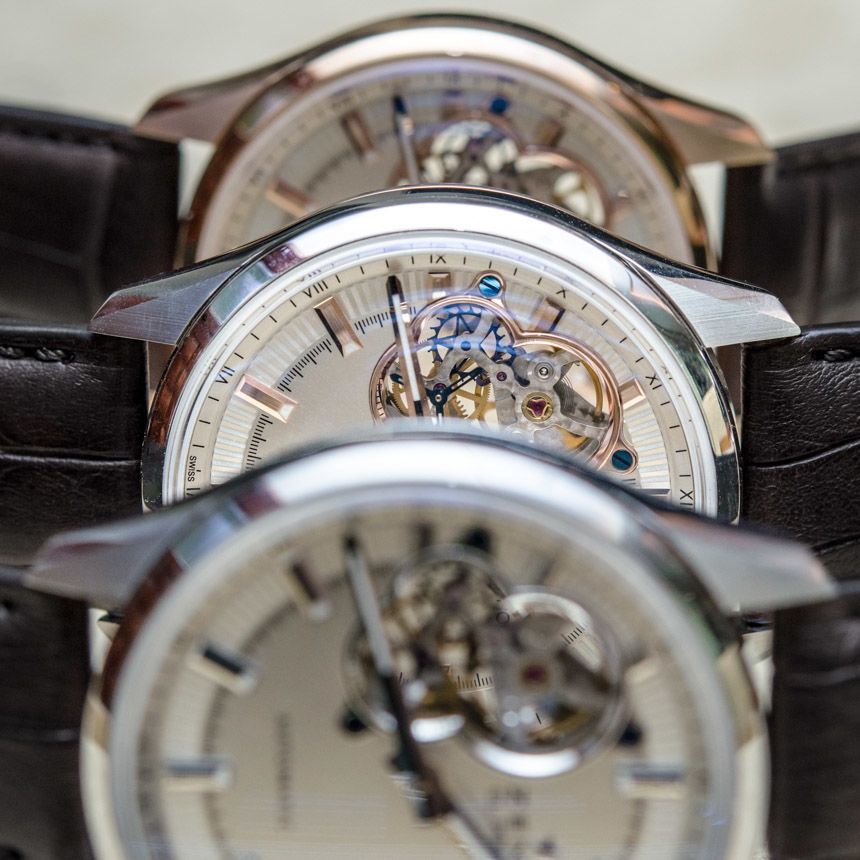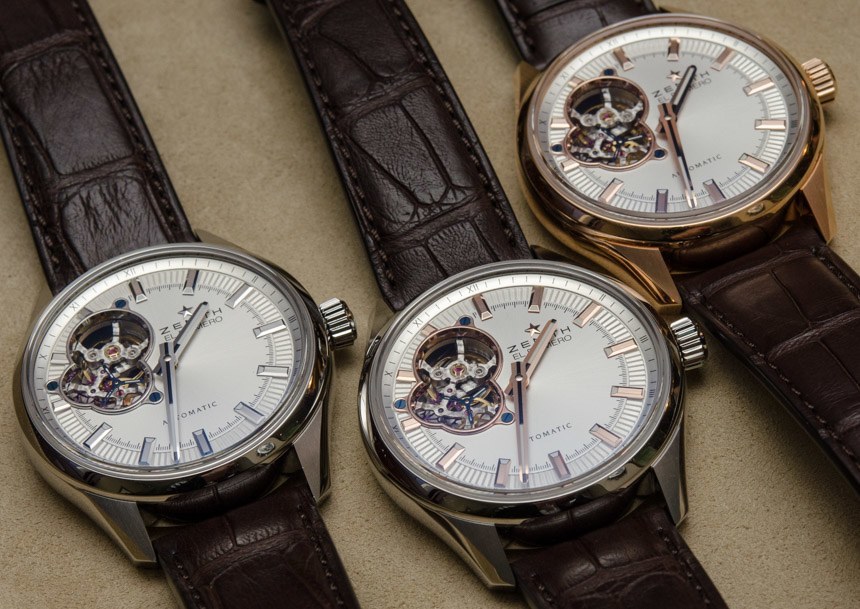
The Zenith El Primero arguably is one of the world’s finest and most interesting mechanical chronograph movements, a caliber that is as refined as it is reliable. Over the decades, it has been modified in countless ways – from complicated calendars to tourbillons, many complications have found their way into the El Primero. The movement itself has been used by famed brands and industry giants, like Rolex, TAG Heuer and many others. The Zenith El Primero Synopsis is a new-for-2014 line of watches that is built around this movement, albeit in a watch that may as well go down in history under the name of Zenith El Primero Paradox – so let us find out why that is, exactly.
For the year 2014, Zenith had two quite surprising – and equally controversial – announcements up its sleeve. First, it announced that it will start using non-in-house made movements (Sellita SW-300 to be specific) in its Elite line of watches and, second, it debuted the El Primero Synopsis collection, a more high-end, time-only selection that was built around the famed chronograph movement El Primero… without its chronograph function. Many were inclined to shout “Blasphemy!” at the brand, but, as usual, things do start to make a bit more sense as they unfold.
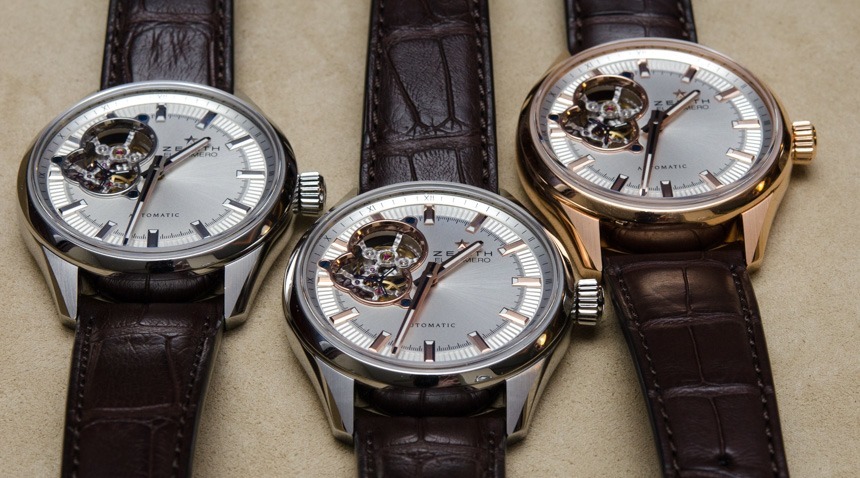
First, allow us to have a few words about the Sellita-based Elite, to help better understand how the Synopsis fits into the picture. As per (now ex-)Zenith CEO Jean-Frederic Dufour’s claims, by 2014, Zenith has reached the very limits of its output capacity at around 50,000 movements, which was coupled with a steady single-figure growth year over year. “Single-figure” may not sound like much, but even at 5-7% growth, that deceptively small number necessitates the expansion of annual output by at least a few thousand movements. That consequently requires more people, more machinery, more space, more supply of raw materials – which in turn, makes the company act like a Jenga tower: growing constantly to a size greater than ever before, but also not as secure and steady as it had been.
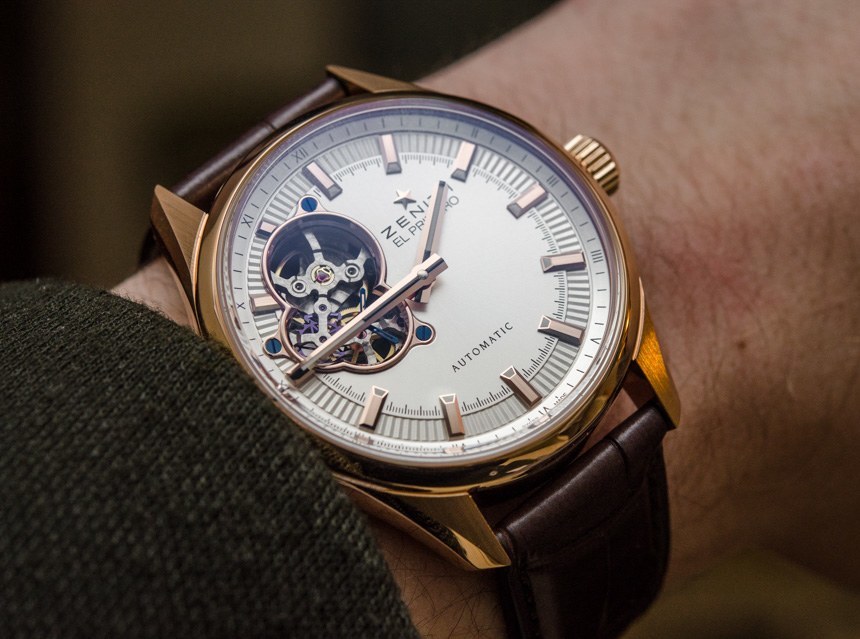
The ever increasing demand from different parts of the global market tends to trick companies into thinking that they are obliged to meet at least most of that extra demand. In this case, I presume Zenith (and its holding company LVMH) found that Sellita-supplied movements mean a relatively safe way of doing that, as it necessitates no stratospheric investments within the brand, and can be cut off relatively easily if the demand drops and/or if the expansion slows. Furthermore, Zenith hopes that this move will bring new customers to the brand thanks to a new and lower entry price point. Last but not least, the considerable margin on several-thousand dollar watches equipped with sourced movements may also have been a factor, making the expansion not just safe, but also profitable.
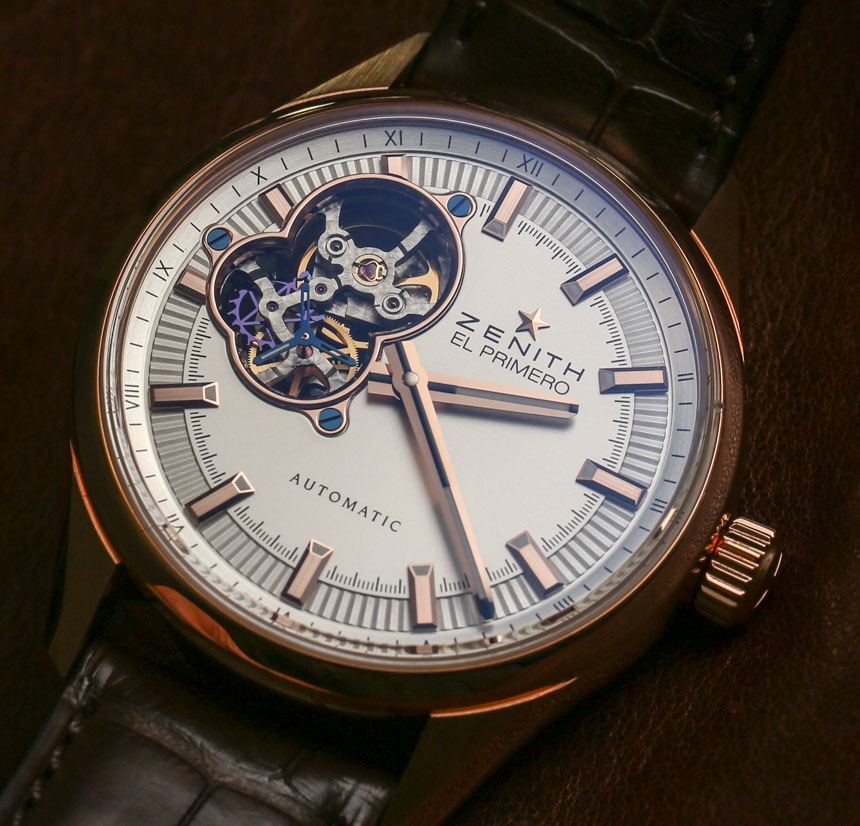
With the Synopsis, however, we are looking at an offering that is much more in line with what we would expect to see from a blue-blooded manufacture like Zenith. The meaning of the word Synopsis is “a brief summary or general survey of something,” and that something, in this case, is the famed El Primero movement. It has been said a million times before, but let us say it again: debuted in 1969, many consider the El Primero to be the first automatic chronograph wristwatch caliber. Zenith started working on its development in 1962, and therefore it took them seven years to develop this high-beat (36,000 beats per hour) monster of a movement – and this was at a time when no computer aided design (CAD) programs were available.
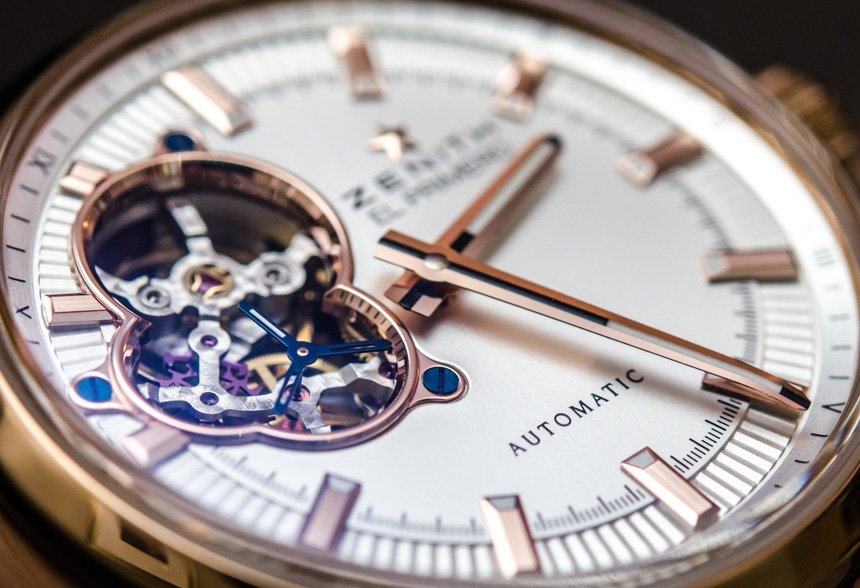
Beyond the lack of CAD programs, there are dozens of other reasons why it took Zenith seven years to come up with the El Primero – the same amount of time it took Patek to develop the Grandmaster Chime… The major challenges included lack of space – the automatic winding and all its wheels and support bridges, as well as the chronograph with its wheels, cams, and bridges, as well as the base movement with the date indication were to be crammed into a seemingly impossibly small space. This was topped with Zenith’s stubbornness to get the hugely challenging 5Hz speed out of the movement to make it the most accurate chronograph wristwatch ever made. Last but not least, the movement was designed from the ground up to be a fully integrated, inseparable whole.
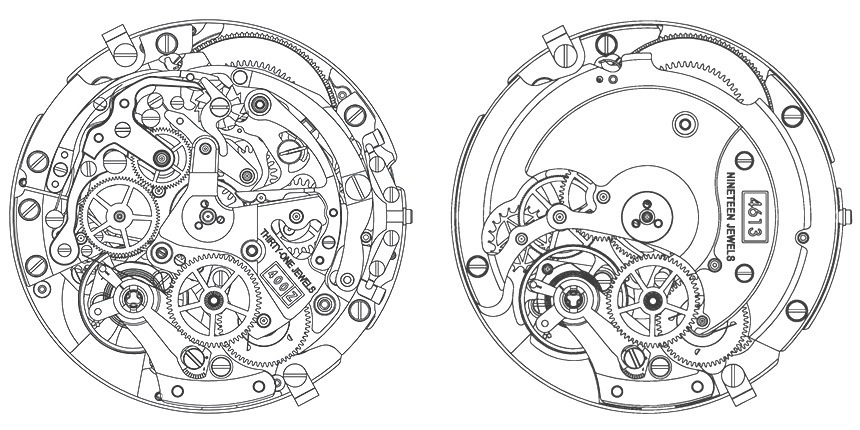
And with that, we have arrived to the “Paradox” nature of the Synopsis. First of all, it is this inseparable whole that has actually been separated for the Synopsis, ridding the El Primero from some of its chronograph parts, slimming down the original 6.60 millimeter thick movement (seen to the left above) to the Synopsis’ 5.58 millimeters (seen to the right). This seemingly negligible loss in thickness also indicates that not much was to be taken away: the El Primero really is a fully integrated movement, not allowing engineers to take a 2-3 millimeter thick module out and just run with it.
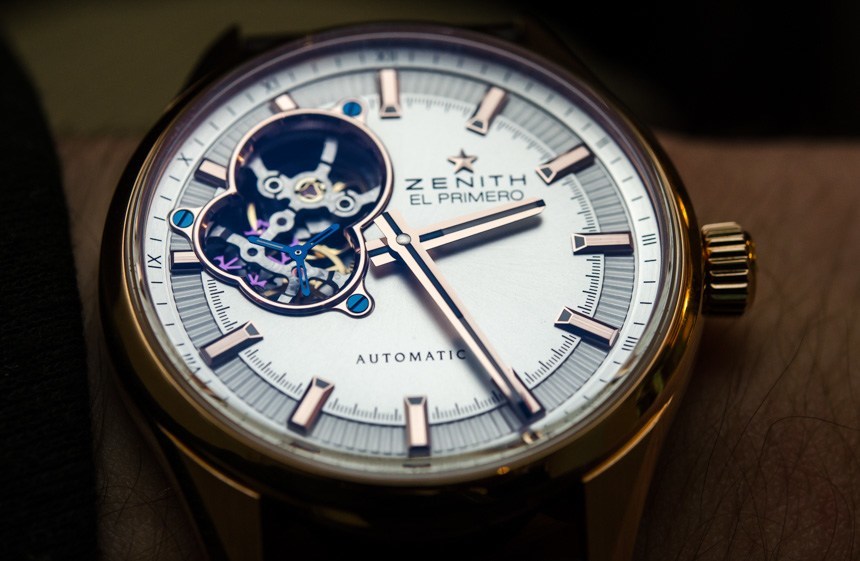
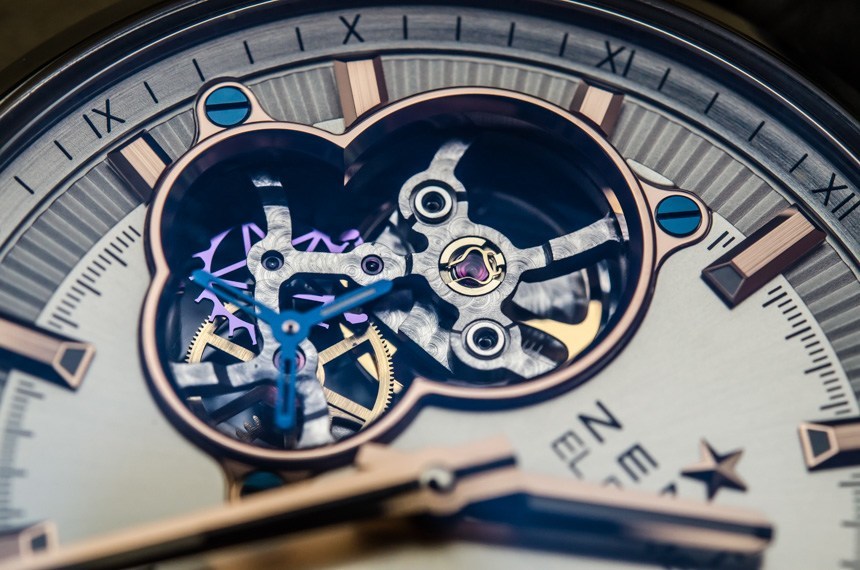
Second, this move shines light on Zenith’s rather conservative approach to the El Primero: it took them over 40 years to create the first watch that utilized the caliber’s capability of measuring 1/10th of a second (that happened with the Striking 10th in 2010, hands-on article here), and even more time to try and use the base of the movement in a collection offering the 5Hz speed and reliability, without the chronograph function (that was the Espada, in 2012).
With that, we should correct a common misbelief, and point out that the Zenith El Primero Synopsis is not the first El Primero without a chronograph function – it was the Espada from two years ago which first pulled off this feat. Where the Synopsis stands out however, is that it offers a much more refined movement, which finally hacks (the Espada did not), and incorporates silicon parts in its construction.
Furthermore, the Zenith El Primero Synopsis offers a splendid look into the movement: one of its key design features is the large opening on the dial between the 8 and 12 o’clock positions. Under the uniquely shaped bridges, the fourth wheel, the escape wheel, pallet fork, and balance wheel are visible. The escape wheel and pallet fork shine in an iridescent hue of purple and blue, due to the fact that for this movement, they were crafted from silicon.
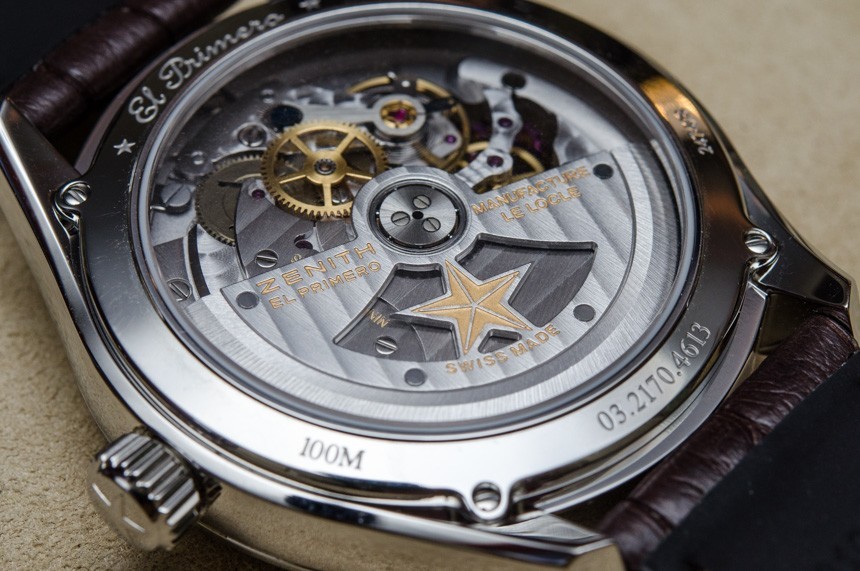
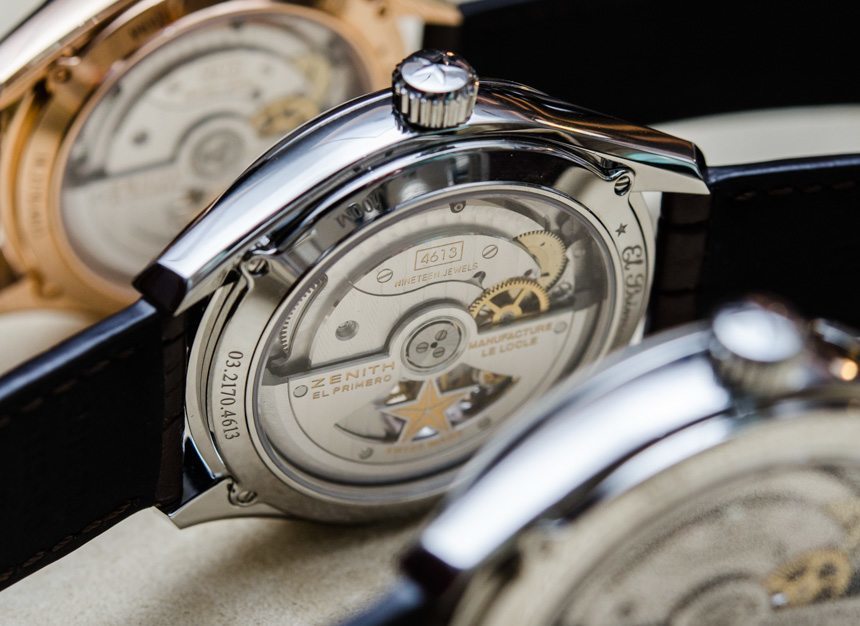
The Zenith El Primero Synopsis is an interesting offering in that, while it rids the El Primero of one of its key features, it also manages to refine the caliber in some interesting ways. A senior watchmaker of Zenith told me that the El Primero never previously offered a hacking function, simply due to the lack of space in the movement. Also, as per my understanding, most El Primero chronograph movements do not have silicon parts (there are but a handful of exceptions), while all Zenith El Primero Synopsis pieces come as standard with this upgrade.
The use of silicon components in the escapement is especially important when it comes to the El Primero. As I learned, one of the greatest challenges concerning the 5 Hz rate of the watch is linked to lubrication: this 25% increase from 4 to 5 Hertz means an exponentially greater wear on lubricants. In fact, Zenith had to develop new coating processes and lubricants in the 1960s to use for the original movement. Today, the use of silicon parts greatly eliminates this issue, as they require little to no lubrication, are lighter, more durable, and also require less frequent servicing. Last but not least, the silicon parts allow for a wider angle of lift in the escapement, making for higher amplitude and hence better timekeeping performance.
